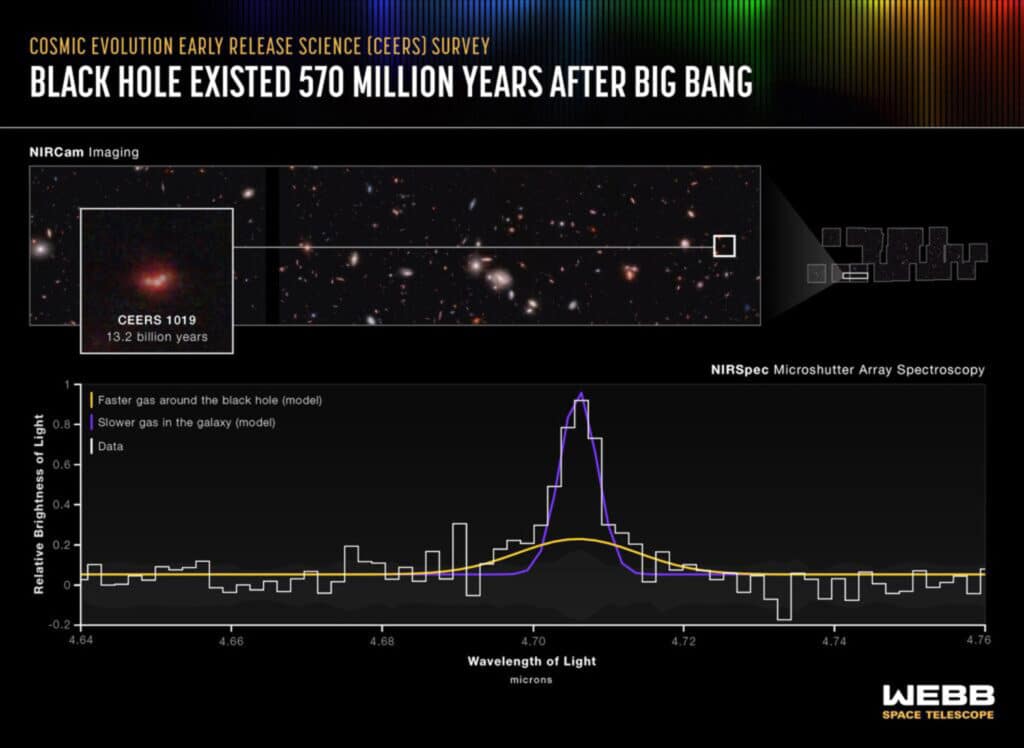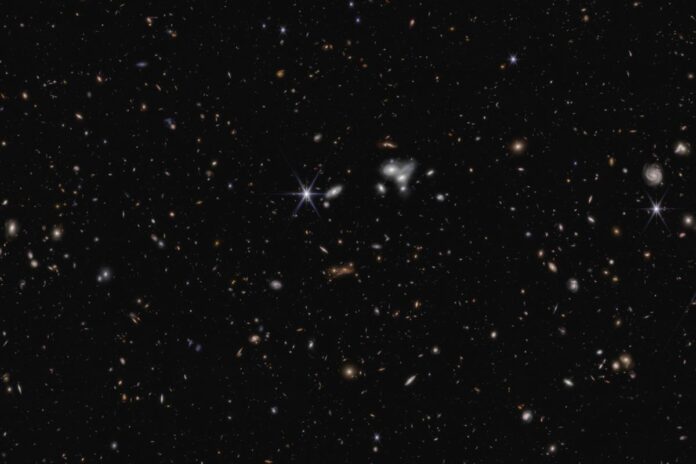Using JWST, scientists have identified the most distant active supermassive black hole. The galaxy CEERS 1019 was formed about 570 million years after the big bang, and its black hole is the least massive one found in the early cosmos.
The researchers discovered two other black holes that were on the smaller side and existed 1 billion and 1.1 billion years after the big bang in addition to the one in CEERS 1019. Eleven galaxies that were there between 470 million and 675 million years ago were also discovered by JWST.
Rebecca Larson, a recent Ph.D. graduate at UT Austin, who led the study, said, “Looking at this distant object with this telescope is a lot like looking at data from black holes that exist in galaxies near our own. There are so many spectral lines to analyze!”
In addition to how long ago it was, CEERS 1019 is famous for the surprisingly large size of the black hole. It weighs in at roughly 9 million solar masses, greater than anticipated for such an early period in cosmic history but significantly less than other black holes that also existed in the early cosmos and were discovered by other observatories. They are easier to find because of their greater brightness because they typically contain more than 1 billion times the sun’s mass. The black hole in CEERS 1019 resembles the Milky Way galaxy’s black hole more closely, which has a mass 4.6 million times that of the sun.
Even though it is smaller, this black hole has been there for so long that it is still unclear how it came to be so soon after the universe’s creation. Smaller black holes must have existed earlier in the cosmos, as scientists have known for a long time, but it wasn’t until JWST started watching that they could make certain discoveries.
The team could distinguish which emissions in the spectrum came from the black hole and which came from its host galaxy. They also determined how much gas the black hole was consuming and how quickly its host galaxy formed stars.
The researchers discovered that this galaxy produces new stars and consumes as much gas as possible. They looked at the pictures to learn more about why it might be. When viewed from Earth, CEERS 1019 looks like three brilliant clusters rather than a single disk.
CHEERS team member Jeyhan Kartaltepe, an associate professor of astronomy at the Rochester Institute of Technology in New York, said, “We’re not used to seeing so much structure in images at these distances. A galaxy merger could partly fuel the activity in this galaxy’s black hole, which could also lead to increased star formation.”

Steven Finkelstein, a professor of astronomy at The University of Texas at Austin, said, “Until now, research about objects in the early universe was largely theoretical. With Webb, not only can we see black holes and galaxies at extreme distances, we can now start to measure them accurately. That’s the tremendous power of this telescope.”
The team has published these results in several initial papers in a special edition of The Astrophysical Journal Letters.
